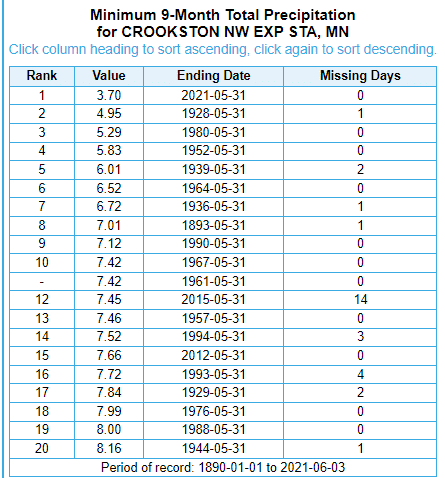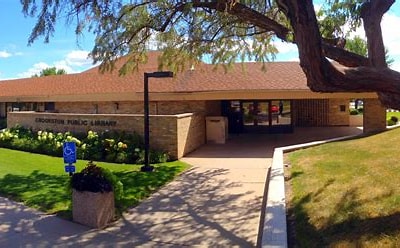The National Weather Service weather station at the Crookston Airport (the official weather station for Crookston) reported 100 degrees on Friday afternoon. The 100-degree temperature shattered the previous record high of 92 degrees on June 4, 1968. Eldred reported 103 degrees at
The 100-degree temperature was the first reported in Crookston since August 3, 1989, and it was the second earlier Crookston has recorded a 100-degree temperature, with the earliest coming on May 30, 1939, according to records that go back to 1890. “There have been around 40 different dates in the past 126 years that have hit 100,” said Greg Gust of the National Weather Service. “1939 was in the dirty ’30s that were off and on in drought conditions. 1989 was also drought conditions.”
Crookston has also been in a drought over the past nine months, with the lowest precipitation from September 1 through May 30 (Fall, winter, spring). Crookston had 3.70 inches of precipitation, while the second-lowest amount was in 1928 with 4.95. “Drought was easing off in northwest Minnesota. In northeast Polk County, it has been abnormally dry, to the center of the county at moderate drought and in the far northwest area of the county you have more severe drought,” said Gust. “We have had a little bit of a break with some rain, but we know we lost whatever deep soil moisture we had over the last nine months.”
The southwestern part of Polk County, through Norman County and into Clay County, is starting to see bad drought conditions again. “Conditions are starting to get a little tense again in that area,” said Gust. “Crookston down to Ada is the driest area, and you go into Hallock, Alvarado, Stephen, Argyle, and that area they had some rain recently and are doing a little better.”
Gust said the outlook for significant widespread soaking rain over the next two weeks doesn’t look good as of Friday afternoon. “The prospects are not good for getting sustained rains across the next several weeks,” said Gust. “There is a little bit of better chance at the end of June, but we need something to tide us over, and we need stuff to come in, and we need all the help we can. Many areas are dry, there are crops that are growing crops, but we need to get some consistent rainfall, which will help feed the next system. It is a tough year so far.”
A chart from the National Weather Service showing the 20 lowest precipitation totals is below.






